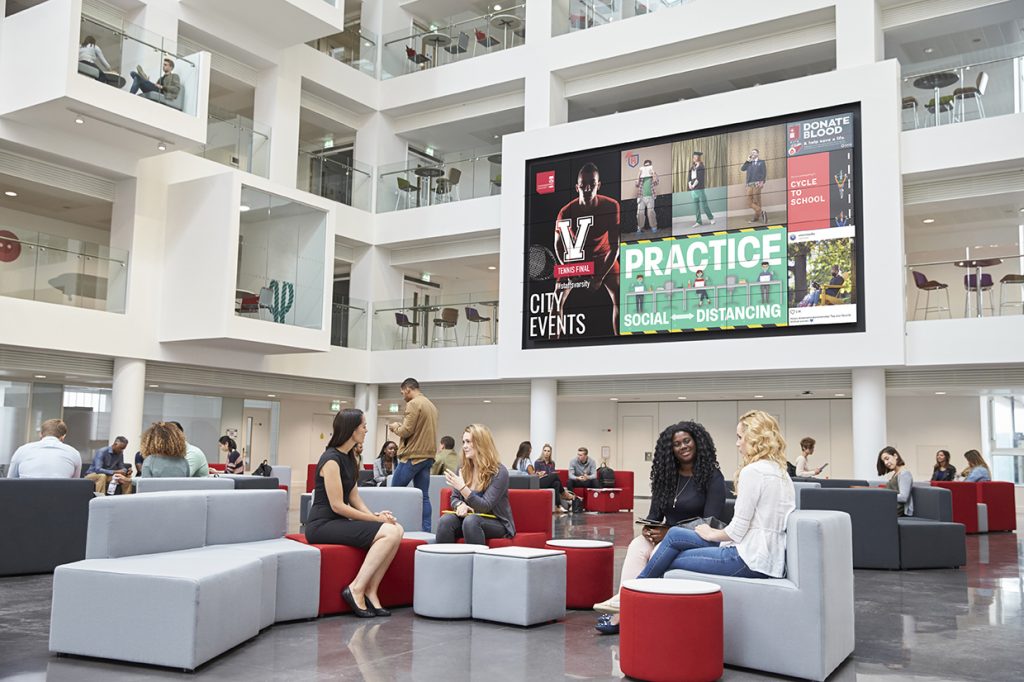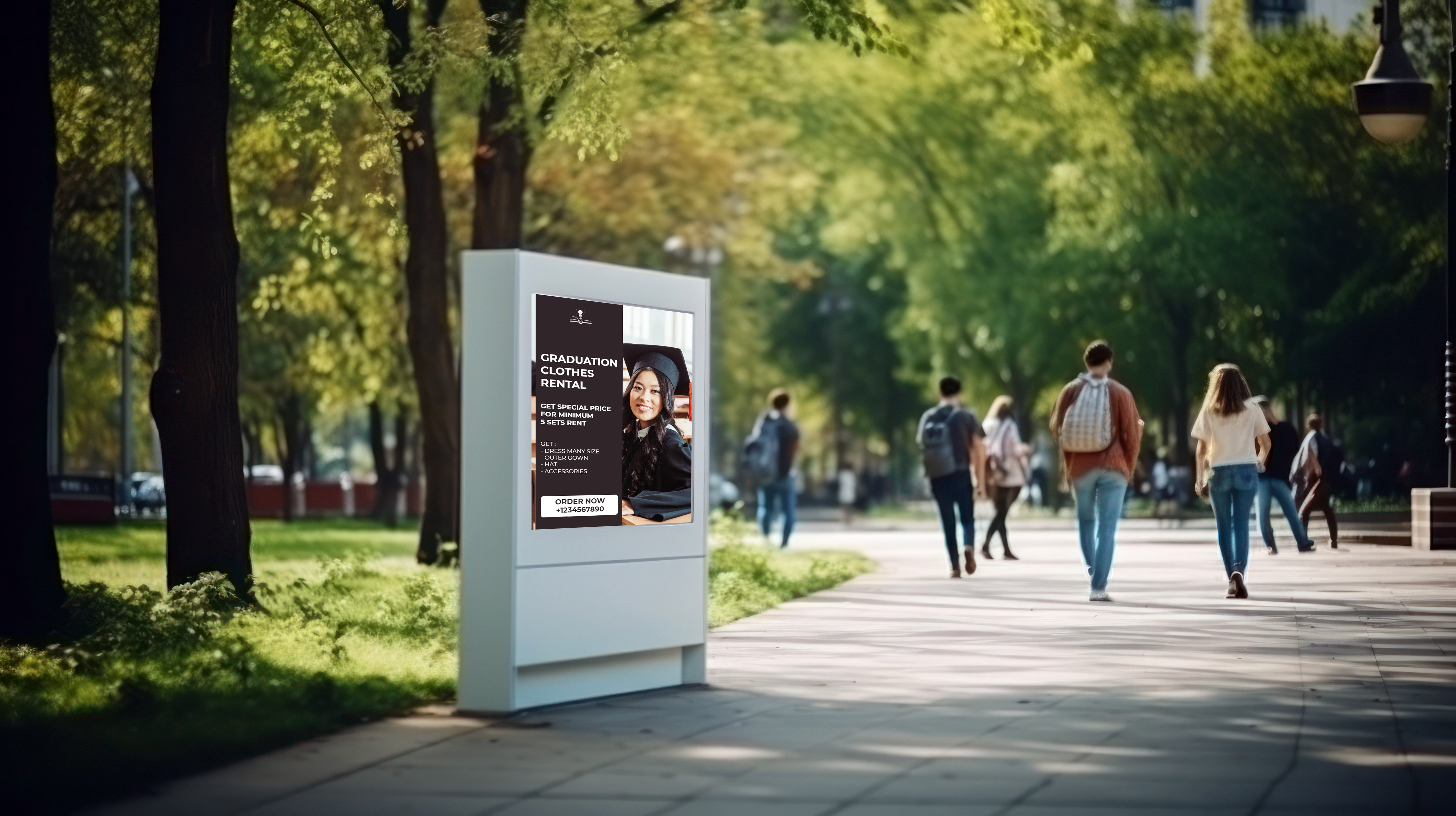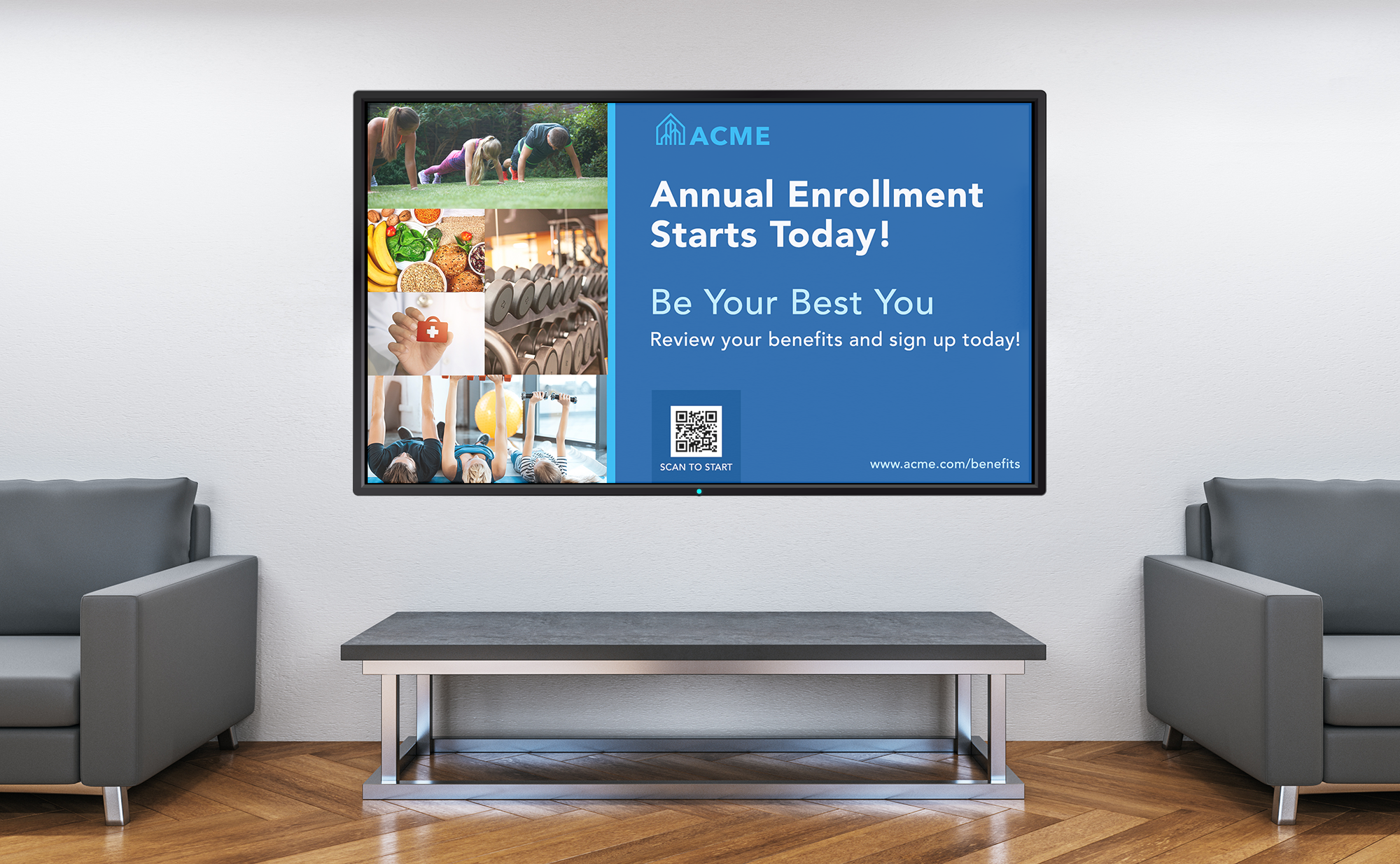“Never stop learning, because life never stops teaching.” Maybe you’ve read something similar on a positivity poster — but that doesn’t make it any less true. It’s certainly the case when it comes to educating yourself on the application of digital signage on colleges and universities.
The amount of information being shared on higher education campuses every day is staggering. Schools need communication solutions that provide information quickly, easily and in appealing ways. When 97 percent of today’s students prefer getting their information digitally — digital signage for universities is the right display in the right place at the right time.
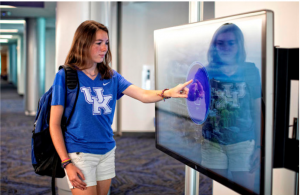
These high-tech informational displays demonstrate that educational institutions are forward-looking, building credibility in the minds of modern students and faculty. Positioned strategically, digital signage fills the empty physical and time spaces between classrooms to captivate and generate authentic interest and engagement.
This is not content “forced” on an audience, such as one-way emails or bland printed posters. The highly interactive character of digital signage benefits the college community with real time information and services that are:
- Timely: Fine-tuned for every hour, day, or week, such as changes to the lunch menu boards, sporting events, or fire alarm reminders.
- Useful: Room changes, staff sicknesses, emergency notifications, and key dates for exams, finals, and holidays.
- Engaging: Combining the essential with the exciting, learning materials and school notices interweave with social media streams and world news to triumph over boredom and fix attention at first glance.
Take notes: class is in session.
Digital Signage 101
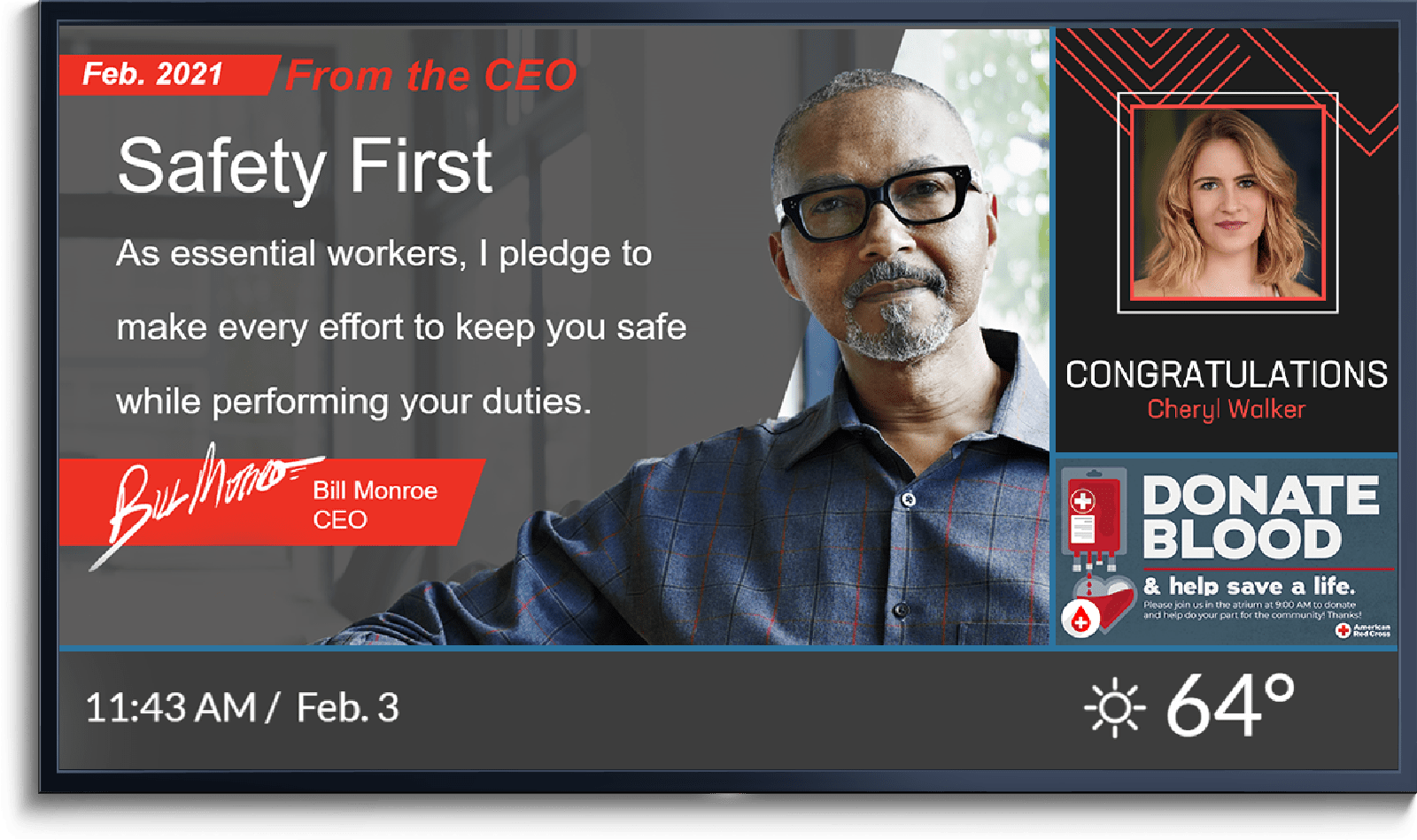
The technology behind digital signage is not only more powerful than ever — it’s also simpler. A modern workplace experience platform enables an extended team that can create and stream content to the right display, anytime and anywhere across the entire campus. The fact that almost anyone can be easily trained to leverage the platform — from marketing professionals, to administration, to faculty — reducing a heavy load that normally falls only to IT. Now there are potentially hundreds of communicators across campus, with the power of a single interface that can serve content to multiple departments. With an internet connection and a cloud-based content management system, this content can be updated instantly from anywhere — on campus or off.
When a content update is sent through the platform— manually or through an automated schedule— screens refresh with immediacy and specificity. While a message can easily go to the whole school, there is extraordinary power in targeted content that is meant only for certain grade levels, departments or zones within a building. Instead of seeing 100 screens alike in content, students and faculty receive screens of high impact visual information that applies more specifically to them. Since the brain processes visuals 60K times faster than text, what campus community members see on a displays engages and informs at the speed of light. Many schools are integrating their digital signage with social media, with displays of fresh content from students and faculty based on hashtags. (With appropriate moderation tools to screen out certain type of imagery and profanity.) And QR codes embedded as visuals enables students to interact with polls, surveys or sign up for campus events.
Teacher Teach Me

Professors and instructors may not know it yet — but they have a whole new teaching assistant in the form of digital signage. The ability to turn screens inside and beyond the classroom into attention-getting and interactive instructional aids — customized with pictures, text, graphs, and vibrant presentations — is a powerful way to extend the curriculum and engage students.
The old school way of checking in on general information — visit a website, open a PDF — gives way to the new school of digital signage, where a display in the corridor can share critical class notes, lesson plans, reading lists, room assignments, exam schedules, and teacher bios. Departments can broadcast classes and meetings to those who can’t make it to a specific location, and incorporate topic specific feeds from around the world, using established news sources (like CNN or Bloomberg), as well as social media posts, and internal/external web pages. This content can be targeted to specific topics to spark discussion and debate in the corridors leading to and from a lecture hall.
One school’s science department showcased its studies on screen with video vignettes and high-resolution infographics and photography that promoted its cutting-edge research. Another class used its digital screens to host a dissection simulation, creating a form of virtual lab as part of its comprehensive learning experience. When a university library saw a decrease in attendance because of eBooks, they performed their own form of digital jujitsu, using electronic screens to draw students back in. The result of this digital signage awareness campaign was a 20% increase in materials circulation, and a doubling in library utilization.
Some college graphics and media programs have opened the opportunity for digital signage collaboration, inviting students in those programs to be part of the content creation. This has proven to be a form of next-level learning for these students, allowing them to see how their assignments measure up in the real world, and giving those members of the campus community a chance to take careful, diligent ownership of those screens.
Digital signage’s ability to host multiple media types helps educators accommodate the different learning styles of groups of students. As educators become more familiar with the role digital signage can play in their lesson plans, they will be able to make better, more innovative decisions on ways to enhance the learning experience across their department and college.
Motivate with Educational Signage

Those glowing screens are an opportunity to heap glowing praise on your school’s individual and collective achievements. Positive news is a chance to build unity among staff and students, and there’s no shortage of morale boosting video and imagery that you can feature with educational digital signage.
Welcome new students by name, share birthdays, and profile which schoolmates are making waves across departments. When you put a digital spotlight on alumni who have gone on to success as scientists, business leaders, entrepreneurs, and athletes, their accomplishments encourage the current student body to excel. (And when you have content templates set up for these spotlights, it can be as easy as drag-and-drop to activate a new set of profiles.) Every screen is then an opportunity to prompt continued education and continuation of a school’s mission.
While it’s easy to deride digital technology as isolating people from each other, positive content circulated via digital signage can instead help to create a vibrant and necessary sense of community. By building awareness and engagement of campus life, people and activities, your screens help to ensure all around development, a great motivator that encourages students to do more and be more.
Root for the Home Team
Whatever sport your school excels in, digital signage is a premiere way to showcase teams on the field or court. Build excitement and school spirit by promoting the dates and times of upcoming events. Run bios of players — the position they play, their year in school — so students and teachers become familiar with these athletic classmates and cheer them on by name. Putting a digital sign spotlight on your latest state-of-the-art sporting facilities — training, lounges, stadiums — is a great way to entice top student athletes as they tour the campus during recruitment drives.
A capable workforce communications platform will feature CMS content folders where you can drop in videos and images to organize play-by-play playlists. This makes it easy for those same signs to highlight winning scores and run replays of the victory action every time your team triumphs, making everyone in view feel part of the action and part of the bigger school family.
Digital Signage Solutions for Dining
Even university’s massive dining halls have their limitations: when availability of certain food items run low, and menu changes need updating only digital signage menu boards can keep up. Vivid, high contrast images and detailed descriptions communicate specials, allergy alerts, price updates and options at different flavor stations, set to change automatically according to serving times.
This type of clear communication helps to keep lines moving faster and increases efficiency for staff and diners. Integrating videos clips of steaming, delicious food offerings across screens can influence healthier food choices, and occupying attention with moving images is known to reduce perceived wait times. Connecting these menu displays to social media feeds can display what are the most popular meal choices for students. (And, if you’re feeling brave, how they’re rating each taste.)
A Degree in Wayfinding
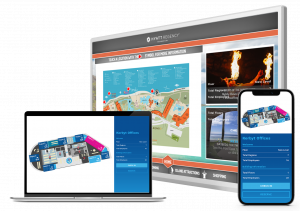
Sprawling campuses can be intimidating environments to navigate for anyone traveling between a labyrinth of buildings or wandering long maze-like halls in search of a room or hall. This can be true even for students in their second or third year, let alone new students, prospective students and parents coming for a tour, or visitors to the school. Equally true is the screen magic of wayfinding to guide the way.
The relevancy of paper maps begins to fade as soon as they’re printed. Digital screens are always current, and navigate by pinch and zoom, with on-screen keyboards that can access and search directories and return turn-by-turn directions. Location descriptions can feature images, animated navigation paths, phone numbers and shuttle schedules to take a student from “you are here” to “let’s get you there.” Building off-limits or a sidewalk under construction? Bright colors or strikethroughs make it visually apparent and reroute the wayfinding map to detour around confusion and arrive at every location on time. Last minute rescheduling or room changes? Digital signage outside lecture halls display the latest details, from a countdown clock to when the room will be free, to a redirect to the new location — all helping to eliminate confusion and missed classes.
Wayfinding can integrate with social and sporting events, delivering both awareness of the activity and directions for those interested in getting to the auditorium or student union or stadium. Even a lack of activity benefits from digital wayfinding: unused spaces can be visually identified and marked as available for students or faculty to book for social or teaching events. And no one needs to stand and wait for directions, when a screen tap (or touchless gesture) can have directions texted to their mobile phone.
Some higher education institutions have incorporated wayfinding into opening day for new students, with digital signage scavenger hunts that make freshmen active participants in learning about their new surroundings, encouraging teamwork and immersion — far more memorable than a printed map that ends up at the bottom of a backpack. Wayfinding by way of digital signage sends a clear and effective message that a school has student’s best interests in mind and knows how to deliver them in a modern, always accessible way.
Digital Signs & Savings
While the hardware and software that drives digital signage represents a fixed cost for schools, there are opportunities to recoup the expense — and even profit. Some schools are using the screen space to sell advertising (consistent with a college’s mission and values, of course) for community services, businesses, and sponsorships, with rates that can vary by duration, frequency, and location of (or on) each sign. With a single workplace experience platform running your centralized digital signage, your placement and timing is streamlined and automated.
Beyond any dollar amount coming in, colleges can also recognize revenue through the indirect channels of efficiency and cost savings. Leaving behind traditional paper-based communications — flyers, posters, banners — eliminates those printing expenses, as well as the cost of personnel traveling about college campuses to distribute and hang single-use communications. The fact that some schools have reported a reduction in paper usage by up to 15 percent represents an additional form of environmental savings. When it comes to digital signage, going digital means more green — in more ways than one.
A Digital Signage Solution is Safety First
Everyone only wants the best of their college experience. But there’s no avoiding that the world is an unpredictable place, and that school tragedies are all too real. Digital signage solutions can’t prevent the worst from happening, but it can be an important part of keeping students and faculty aware and safe.
With thousands of people spread across a college campus, screens located in key locations can be set to change color and animate, to draw attention as the first place to look for special alerts and emergency announcements. In the event of severe weather, updates that access real-time news feed can provide warnings of tornadoes and wildfires, with instructions on where to evacuate — or shelter in place. These screens can be set-up and saved in advance of trouble, ready to activate at a moment’s notice to make everyone aware of instructions to keep safe.
In times of less immediate danger, digital signage can be a consistent educator that reminds students of sensible precautions related to their personal safety, as well as health protocols and procedures. It’s no exaggeration to say that a proactive digital signage system that keeps students and faculty informed in times of crisis can reduce confusion, avert tragedy, and even save lives.
There Will Be a Test Later
Higher education has always been about future opportunity. Putting a workplace experience platform behind the monitors across college campuses creates a network designed to improve communication: simplified, streamlined, grabbing attention with dynamic content — showcasing a school’s vision, values, and character in a unique and 21st century fashion.
Your students and faculty can really use someone with a “Masters in Digital Signage.” Enroll now.

